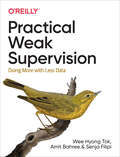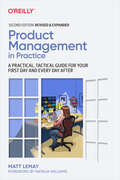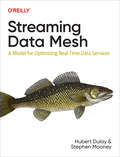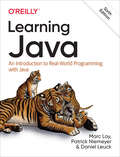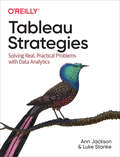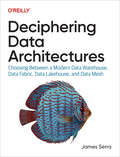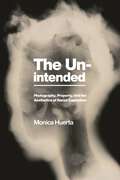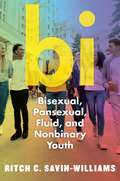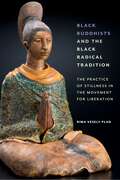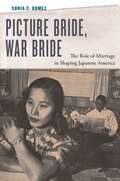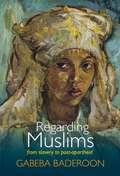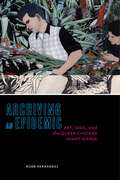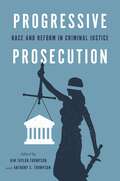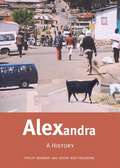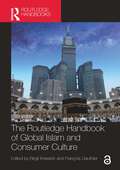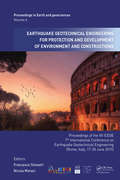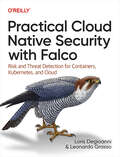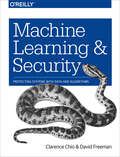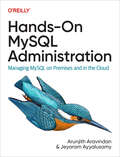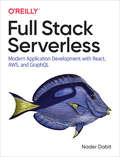- Table View
- List View
Hands-On Entity Resolution: A Practical Guide to Data Matching with Python
by Michael ShearerEntity resolution is a key analytic technique that enables you to identify multiple data records that refer to the same real-world entity. With this hands-on guide, product managers, data analysts, and data scientists will learn how to add value to data by cleansing, analyzing, and resolving datasets using open source Python libraries and cloud APIs.Author Michael Shearer shows you how to scale up your data matching processes and improve the accuracy of your reconciliations. You'll be able to remove duplicate entries within a single source and join disparate data sources together when common keys aren't available. Using real-world data examples, this book helps you gain practical understanding to accelerate the delivery of real business value.With entity resolution, you'll build rich and comprehensive data assets that reveal relationships for marketing and risk management purposes, key to harnessing the full potential of ML and AI. This book covers:Challenges in deduplicating and joining datasetsExtracting, cleansing, and preparing datasets for matchingText matching algorithms to identify equivalent entitiesTechniques for deduplicating and joining datasets at scaleMatching datasets containing persons and organizationsEvaluating data matchesOptimizing and tuning data matching algorithmsEntity resolution using cloud APIsMatching using privacy-enhancing technologies
Practical Weak Supervision: Doing More with Less Data
by Wee Hyong Tok Amit Bahree Senja FilipiMost data scientists and engineers today rely on quality labeled data to train machine learning models. But building a training set manually is time-consuming and expensive, leaving many companies with unfinished ML projects. There's a more practical approach. In this book, Wee Hyong Tok, Amit Bahree, and Senja Filipi show you how to create products using weakly supervised learning models.You'll learn how to build natural language processing and computer vision projects using weakly labeled datasets from Snorkel, a spin-off from the Stanford AI Lab. Because so many companies have pursued ML projects that never go beyond their labs, this book also provides a guide on how to ship the deep learning models you build.Get up to speed on the field of weak supervision, including ways to use it as part of the data science processUse Snorkel AI for weak supervision and data programmingGet code examples for using Snorkel to label text and image datasetsUse a weakly labeled dataset for text and image classificationLearn practical considerations for using Snorkel with large datasets and using Spark clusters to scale labeling
Product Management in Practice: A Practical, Tactical Guide for Your First Day and Every Day After
by Matt LeMayProduct management has become a critical function for modern organizations, from small startups to corporate enterprises. And yet, the day-to-day work of product management remains largely misunderstood. In theory, product managers are high-flying visionaries who build products that people love. In practice, they're hard-working facilitators who bring clarity and focus to their teams.In this thoroughly revised and expanded edition, Matt LeMay provides real-world guidance for current and aspiring product managers. Updated for the era of remote and hybrid work, this book provides actionable answers to product management's most persistent and confounding questions, starting with: What exactly am I supposed to do all day?With this book, you'll learn:What the day-to-day work of product management entails--and how to excel at itWhy no job title or description will resolve the ambiguity of your roleHow to bridge the false dichotomy between "strategy" and "execution"Why the temptation to focus on decks and documentation can be bad for your team (and for you)How to prioritize your time and pick your battles
Streaming Data Mesh: A Model for Optimizing Real-Time Data Services
by Stephen Mooney Hubert DulayData lakes and warehouses have become increasingly fragile, costly, and difficult to maintain as data gets bigger and moves faster. Data meshes can help your organization decentralize data, giving ownership back to the engineers who produced it. This book provides a concise yet comprehensive overview of data mesh patterns for streaming and real-time data services.Authors Hubert Dulay and Stephen Mooney examine the vast differences between streaming and batch data meshes. Data engineers, architects, data product owners, and those in DevOps and MLOps roles will learn steps for implementing a streaming data mesh, from defining a data domain to building a good data product. Through the course of the book, you'll create a complete self-service data platform and devise a data governance system that enables your mesh to work seamlessly.With this book, you will:Design a streaming data mesh using KafkaLearn how to identify a domainBuild your first data product using self-service toolsApply data governance to the data products you createLearn the differences between synchronous and asynchronous data servicesImplement self-services that support decentralized data
Learning Java: An Introduction to Real-World Programming with Java
by Patrick Niemeyer Marc Loy Daniel LeuckIdeal for working programmers new to Java, this best-selling book guides you through the language features and APIs of Java 21. Through fun, compelling, and realistic examples, authors Marc Loy, Patrick Niemeyer, and Dan Leuck introduce you to Java's fundamentals, including its class libraries, programming techniques, and idioms, with an eye toward building real applications. This updated sixth edition expands the content to continue covering lambdas and streams, and shows you how to use a functional paradigm in Java. You'll learn about the latest Java features introduced since the book's fifth edition, from JDK 15 through 21. You'll also take a deep dive into virtual threads (introduced as Project Loom in Java 19). This guide helps you: Learn the structure of the Java language and Java applicationsWrite, compile, and execute Java applicationsUnderstand the basics of Java threading and concurrent programmingLearn Java I/O basics, including local files and network resourcesCreate compelling interfaces with an eye toward usabilityLearn how functional features have been integrated in JavaKeep up with Java developments as new versions are released
Tableau Strategies: Solving Real, Practical Problems with Data Analytics
by Ann Jackson Luke StankeIf you want to increase Tableau's value to your organization, this practical book has your back. Authors Ann Jackson and Luke Stanke guide data analysts through strategies for solving real-world analytics problems using Tableau. Starting with the basics and building toward advanced topics such as multidimensional analysis and user experience, you'll explore pragmatic and creative examples that you can apply to your own data.Staying competitive today requires the ability to quickly analyze and visualize data and make data-driven decisions. With this guide, data practitioners and leaders alike will learn strategies for building compelling and purposeful visualizations, dashboards, and data products. Every chapter contains the why behind the solution and the technical knowledge you need to make it work.Use this book as a high-value on-the-job reference guide to TableauVisualize different data types and tackle specific data challengesCreate compelling data visualizations, dashboards, and data productsLearn how to generate industry-specific analyticsExplore categorical and quantitative analysis and comparisonsUnderstand geospatial, dynamic, statistical, and multivariate analysisCommunicate the value of the Tableau platform to your team and to stakeholders
Deciphering Data Architectures: Choosing Between a Modern Data Warehouse, Data Fabric, Data Lakehouse, and Data Mesh
by James SerraData fabric, data lakehouse, and data mesh have recently appeared as viable alternatives to the modern data warehouse. These new architectures have solid benefits, but they're also surrounded by a lot of hyperbole and confusion. This practical book provides a guided tour of these architectures to help data professionals understand the pros and cons of each. James Serra, big data and data warehousing solution architect at Microsoft, examines common data architecture concepts, including how data warehouses have had to evolve to work with data lake features. You'll learn what data lakehouses can help you achieve, as well as how to distinguish data mesh hype from reality. Best of all, you'll be able to determine the most appropriate data architecture for your needs. With this book, you'll:Gain a working understanding of several data architecturesLearn the strengths and weaknesses of each approachDistinguish data architecture theory from realityPick the best architecture for your use caseUnderstand the differences between data warehouses and data lakesLearn common data architecture concepts to help you build better solutionsExplore the historical evolution and characteristics of data architecturesLearn essentials of running an architecture design session, team organization, and project success factorsFree from product discussions, this book will serve as a timeless resource for years to come.
The Unintended: Photography, Property, and the Aesthetics of Racial Capitalism (America and the Long 19th Century #26)
by Monica HuertaReimagines photography through the long history of ideas of expressionThe end of the nineteenth century saw massive developments and innovations in photography at a time when the forces of Western modernity—industrialization, racialization, and capitalism—were quickly reshaping the world. The Unintended slows down the moment in which the technology of photography seemed to speed itself—and so the history of racial capitalism—up. It follows the substantial shifts in the markets, mediums, and forms of photography during a legally murky period at the end of the nineteenth century. Monica Huerta traces the subtle and paradoxical ways legal thinking through photographic lenses reinscribed a particular aesthetics of whiteness in the very conceptions of property ownership. The book pulls together an archive that encompasses the histories of performance and portraiture alongside the legal, pursuing the logics by which property rights involving photographs are affirmed (or denied) in precedent-setting court cases and legal texts. Emphasizing the making of “expression” into property to focus our attention on the failures of control that cameras do not invent, but rather put new emphasis on, this book argues that designations of control’s absence are central to the practice and idea of property-making. The Unintended proposes that tracking and analyzing the sensed horizons of intention, control, autonomy, will, and volition offers another way into understanding how white supremacy functions. Ultimately, its unique historical reading practice offers a historically-specific vantage on the everyday workings of racial capitalism and the inheritances of white supremacy that structure so much of our lives.
Bi: Bisexual, Pansexual, Fluid, and Nonbinary Youth
by Ritch C. Savin-WilliamsWhat bisexual youth can tell us about today’s gender and sexual identities Despite the increasing visibility of LGBTQ people in American culture, our understanding of bisexuality remains superficial, at best. Yet, five times as many people identify as bisexual than as gay or lesbian, and as much as 25 percent of the population is estimated to be bisexual. In Bi, noted scholar of youth sexuality, Ritch Savin-Williams, brings bisexuality to centerstage at a moment when Gen Z and millennial youth and young adults are increasingly rejecting traditional labels altogether. Drawing on interviews with bisexual youth from a range of racial, ethnic, and social class groups, he reveals to us how bisexuals define their own sexual orientation and experiences—in their own words. Savin-Williams shows how and why people might identify as bisexual as a result of their biology or upbringing; as a bridge or transition to something else; as a consequence of their curiosity; or for a range of other equally valid reasons.With an understanding that sexuality and romantic attachments are often influx, Savin-Williams offers us a way to think about bisexuality as part of a continuum. He shows that many of the young people who identify as bisexual often defy traditional views, dispute false notions, and reimagine sexuality with regard to both practice and identity. Broadly speaking, he shows that many young people experience a complex, nuanced existence with multiple sexual and romantic attractions as well as gender expressions, which are seldom static but fluctuate over their lives.Savin-Williams provides an important new understanding of bisexuality as an orientation, behavior, and identity. Bi shows us that bisexuality is seen and embraced as a valid sexual identity more than ever before, giving us timely and much-needed insight into the complex, fascinating experiences of bisexual youth themselves.
Black Buddhists and the Black Radical Tradition: The Practice of Stillness in the Movement for Liberation
by Rima Vesely-FladFinalist, Award for Excellence in the Study of Religion, Constructive-Reflective Studies, given by the American Academy of ReligionExplores how Black Buddhist Teachers and Practitioners interpret Western Buddhism in unique spiritual and communal ways In Black Buddhists and the Black Radical Tradition, Rima Vesely-Flad examines the distinctive features of Black-identifying Buddhist practitioners, arguing that Black Buddhists interpret Buddhist teachings in ways that are congruent with Black radical thought. Indeed, the volume makes the case that given their experiences with racism—both in the larger society and also within largely white-oriented Buddhist organizations—Black cultural frameworks are necessary for illuminating the Buddha’s wisdom. Drawing on interviews with forty Black Buddhist teachers and practitioners, Vesely-Flad argues that Buddhist teachings, through their focus on healing intergenerational trauma, provide a vitally important foundation for achieving Black liberation. She shows that Buddhist teachings as practiced by Black Americans emphasize different aspects of the religion than do those in white convert Buddhist communities, focusing more on devotional practices to ancestors and community uplift.The book includes discussions of the Black Power movement, the Black feminist movement, and the Black prophetic tradition. It also offers a nuanced discussion of how the Black body, which has historically been reviled, is claimed as a vehicle for liberation. In so doing, the book explores how the experiences of non-binary, gender non-conforming, and transgender practitioners of African descent are validated within the tradition. The book also uplifts the voices of lesbian, gay, bisexual, and queer Black Buddhists. This unique volume shows the importance of Black Buddhist teachers’ insights into Buddhist wisdom, and how they align Buddhism with Black radical teachings, helping to pull Buddhism away from dominant white cultural norms.
Picture Bride, War Bride: The Role of Marriage in Shaping Japanese America
by Sonia C. GomezExamines the role marriage played in the lives of Japanese women during periods of racial exclusion in the United StatesIn 1908 the United States and Japan agreed to limit the migration of Japanese laborers to the US. The Gentlemen’s Agreement of 1908 ushered in an era of exclusion for the Japanese, but an exception was made for Japanese women who migrated as wives of Japanese men. In 1924 that exception would end with the passage of the National Origins Act. Immediately after World War II, Japanese women were once again permitted to enter the US as brides— this time, however, as the wives of American servicemen stationed throughout Japan. The ban on Japanese immigration would not be lifted until 1952.Picture Bride, War Bride examines how the institution of marriage created pockets of legal and social inclusion for Japanese women during the period of Japanese exclusion. Sonia C. Gomez begins with the first wave of Japanese women's migration in the early twentieth century (picture brides), and ends with the second mass migration of Japanese women after World War II (war brides), to illustrate how popular and political discourse drew on overlapping and conflicting logics to either racially exclude the Japanese or facilitate their inclusion via immigration legislation privileging wives and mothers. Picture Bride, War Bride retells the history of Japanese migration and exclusion by centering women, gender, and sexuality, and in so doing, troubles the inclusion versus exclusion binary. While the Japanese were racially excluded between 1908 and 1952, Japanese wives and mothers were permitted entry because their inclusion served American interests in the Pacific. However, the very rationale enabling their inclusion simultaneously restricted and defined the parameters of their lives within the US.Picture Bride, War Bride serves as a compelling analysis of how the intricate interplay between societal norms and political interests can both harness and contradict the interconnected frameworks of race, gender, and sexuality.
Regarding Muslims: From slavery to post-apartheid
by Gabeba BaderoonAn analysis of the role of Muslims from South Africa’s founding to the present and points to the resonance of these discussions beyond South Africa. How do Muslims fit into South Africa's well-known narrative of colonialism, apartheid and post-apartheid? South Africa is infamous for apartheid, but the country's foundation was laid by 176 years of slavery from 1658 to 1834, which formed a crucible of war, genocide and systemic sexual violence that continues to haunt the country today. Enslaved people from East Africa, India and South East Asia, many of whom were Muslim, would eventually constitute the majority of the population of the Cape Colony, the first of the colonial territories that would eventually form South Africa. Drawing on an extensive popular and official archive, Regarding Muslims analyses the role of Muslims from South Africa?s founding moments to the contemporary period and points to the resonance of these discussions beyond South Africa. It argues that the 350-year archive of images documenting the presence of Muslims in South Africa is central to understanding the formation of concepts of race, sexuality and belonging. In contrast to the themes of extremism and alienation that dominate Western portrayals of Muslims, Regarding Muslims explores an extensive repertoire of picturesque Muslim figures in South African popular culture, which oscillates with more disquieting images that occasionally burst into prominence during moments of crisis. This pattern is illustrated through analyses of etymology, popular culture, visual art, jokes, bodily practices, oral narratives and literature. The book ends with the complex vision of Islam conveyed in the post-apartheid period.
Archiving an Epidemic: Art, AIDS, and the Queer Chicanx Avant-Garde (Sexual Cultures #36)
by Robb HernándezHonorable Mention, 2021 Latinx Studies Section Outstanding Book Award, given by the Latin American Studies AssociationWinner, 2020 Latino Book Awards in the LGBTQ+ Themed SectionFinalist, 2019 Lambda Literary Award in LGBTQ StudiesCritically reimagines Chicanx art, unmasking its queer afterlife Emboldened by the boom in art, fashion, music, and retail culture in 1980s Los Angeles, the iconoclasts of queer Aztlán—as Robb Hernández terms the group of artists who emerged from East LA, Orange County, and other parts of Southern California during this period—developed a new vernacular with which to read the city in bloom. Tracing this important but understudied body of work, Archiving an Epidemic catalogs a queer retelling of the Chicana and Chicano art movement, from its origins in the 1960s, to the AIDS crisis and the destruction it wrought in the 1980s, and onto the remnants and legacies of these artists in the current moment. Hernández offers a vocabulary for this multi-modal avant-garde—one that contests the heteromasculinity and ocular surveillance visited upon it by the larger Chicanx community, as well as the formally straight conditions of traditional archive-building, museum institutions, and the art world writ large. With a focus on works by Mundo Meza (1955–85), Teddy Sandoval (1949–1995), and Joey Terrill (1955– ), and with appearances by Laura Aguilar, David Hockney, Robert Mapplethorpe, and even Eddie Murphy, Archiving an Epidemic composes a complex picture of queer Chicanx avant-gardisms. With over sixty images—many of which are published here for the first time—Hernández’s work excavates this archive to question not what Chicanx art is, but what it could have been.
Brains Confounded by the Ode of Abū Shādūf Expounded: Volume One (Library of Arabic Literature #18)
by Yūsuf al-ShirbīnīWitty, bawdy, and vicious, Yūsuf al-Shirbīnī’s Brains Confounded pits the “coarse” rural masses against the “refined” urban population. In Volume One, al-Shirbīnī describes the three rural “types”—peasant cultivator, village man-of-religion, and rural dervish—offering anecdotes testifying to the ignorance, dirtiness, and criminality of each. In Volume Two, he presents a hilarious parody of the verse-and-commentary genre so beloved by scholars of his day, with a 47-line poem supposedly written by a peasant named Abū Shādūf, who charts the rise and fall of his fortunes. Wielding the scholarly tools of elite literature, al-Shirbīnī responds to the poem with derision and ridicule, dotting his satire with digressions into love, food, and flatulence. Volume Two of Brains Confounded is followed by Risible Rhymes, a concise text that includes a comic disquisition on “rural” verse, mocking the pretensions of uneducated poets from Egypt’s countryside. Risible Rhymes also examines various kinds of puzzle poems, which were another popular genre of the day, and presents a debate between scholars over a line of verse by the fourth/tenth-century poet al-Mutanabbī. Together, Brains Confounded and Risible Rhymes offer intriguing insight into the intellectual concerns of Ottoman Egypt, showcasing the intense preoccupation with wordplay, grammar, and stylistics and shedding light on the literature of the era.An English-only edition.
Progressive Prosecution: Race and Reform in Criminal Justice
by Anthony C. Thompson Kim Taylor-ThompsonProvides compelling and manageable solutions for how to reform the criminal justice system from the inside out A racial reckoning in the US criminal justice system was long overdue well before the highly publicized murders of George Floyd, Breonna Taylor, and many others in 2020. Progressive Prosecution argues that prosecutors, having helped build our failed system of mass incarceration, must now lead the charge to dismantle it.With contributions from practicing district attorneys as well as leading scholars in the fields of law and criminal justice, Taylor-Thompson and Thompson’s volume offers an unapologetically ambitious vision for reform. The contributors draw from empirical evidence and years of combined research experience to argue that change must happen at the local level, with prosecutors choosing to adopt race-conscious approaches. These prosecutors must do the hard work themselves, actively focusing on the ways that race misshapes perceptions of criminality, influences discretionary calls, affects how we select juries, and induces a reliance on punitive responses. Progressive Prosecution acts as both a call to action and a practical guide, instructing prosecutors on what they need to do to bring about lasting and meaningful change. Progressive Prosecution is an urgent work of scholarship, a must-read for anyone committed to racial equity and meaningful criminal justice reform.
Alexandra: A history
by Phil Bonner Noor NieftagodienAlexandra: A History is a social and political history of one of South Africa’s oldest townships. It begins with the founding of Alexandra as a freehold township in 1912 and traces its growth as a centre of black working-class life through the early years before the Nationalist government, through the struggles of the apartheid era and into the present day. Declared as a location for ‘natives and coloureds’, Alexandra became home to a diverse population where stand owners, tenants, squatters, hostel-dwellers, workers and migrants from every corner of the country converged to make a new life for themselves near the economic hub of Johannesburg. The stories of ordinary people are at the core of the township’s history. Based on numerous life-history interviews with residents and previously unexamined archive sources, the book portrays in vivid detail the daily struggles and tribulations of the people of Alexandra. A significant focus is the rich history of political resistance, in which political organisations and civic movements organised bus boycotts, anti-removal and anti-pass campaigns, and mobilised for housing and a better life for the township’s residents. But the book also tells the stories of daily life, of the making of urban cultures and of the infamous Spoilers and Msomi gangs. Over weekends Alexandra came alive as soccer matches, church services and shebeens vie for the attention of residents. Alexandra: A History highlights the social complexities of the township, which at times caused tension between different segments of the population. Above all else, despite a long history of hardship and adversity, the community spirit of the people of Alexandra, expressed in a fiercely loyal love of their township home, has repeatedly triumphed and endured.
Strange Fruit of the Black Pacific: Imperialism’s Racial Justice and Its Fugitives (Nation of Nations #3)
by Vince SchleitwilerSet between the rise of the U.S. and Japan as Pacific imperial powers in the 1890s and the aftermath of the latter’s defeat in World War II, Strange Fruit of the Black Pacific traces the interrelated migrations of African Americans, Japanese Americans, and Filipinos across U.S. domains. Offering readings in literature, blues and jazz culture, film,theatre, journalism, and private correspondence, Vince Schleitwiler considers how the collective yearnings and speculative destinies of these groups were bound together along what W.E.B. Du Bois called the world-belting color line. The links were forged by the paradoxical practices of race-making in an aspiring empire—benevolent uplift through tutelage, alongside overwhelming sexualized violence—which together comprise what Schleitwiler calls “imperialism’s racial justice.” This process could only be sustained through an ongoing training of perception in an aesthetics of racial terror, through rituals of racial and colonial violence that also provide the conditions for an elusive countertraining. With an innovative prose style, Strange Fruit of the Black Pacific pursues the poetic and ethical challenge of reading, or learning how to read, the black and Asian literatures that take form and flight within the fissures of imperialism’s racial justice. Through startling reinterpretations of such canonical writers as James Weldon Johnson, Nella Larsen, Toshio Mori, and Carlos Bulosan, alongside considerations of unexpected figures such as the musician Robert Johnson and the playwright Eulalie Spence, Schleitwiler seeks to reactivate the radical potential of the Afro-Asian imagination through graceful meditations on its representations of failure, loss, and overwhelming violence.
Pediatric Laparoscopy
by Thom E LobeSince pediatric surgeons can and do perform nearly every major pediatric surgical procedure laparoscopically, and since many of the approaches have evolved some over the years—past the learning curve—into cost effective operations that rarely take extra time to perform, or in some cases save time, it is worthwhile reviewing our current practices. This book, then, serves as both an update of current practices and as a manual for how to approach the most common of the pediatric disorders using laparoscopic techniques. It covers the basics of anesthesia, instrumentation and ergonomics and then reviews many of the more commonly performed laparoscopic and thoracoscopic pediatric procedures, including a review of fetal work. While any book written about such a rapidly evolving technique may miss some of the very newest twists and modifications of technique, it is our hope that most of the contents will serve the readers as a reference for years to come as they care for children with common pediatric surgical problems.
The Routledge Handbook of Global Islam and Consumer Culture (Routledge Handbooks in Religion)
by Birgit Krawietz François GauthierThe Routledge Handbook of Global Islam and Consumer Culture is an outstanding inter- and transdisciplinary reference source to key topics, problems, and debates in this challenging research field. The study of Islam is enriched by investigating religion and, notably, Islamic normativity (fiqh) as a resource for product design, attitudes toward commodification, and appropriated patterns of behavior. Comprising 35 chapters (including an extended Introduction) by a team of international contributors from chairholders to advanced graduate students, the handbook is divided into seven parts: Guiding Frameworks of Understanding Historical Probes Urbanism and Consumption Body Manipulation, Vestiary Regimes, and Gender Mediated Religion and Culture Consumer Culture, Lifestyle, and Senses of the Self through Consumption Markets These sections examine vibrant debates around consumption, frugality, Islamic jurisprudence and fatwas in the world economy, capitalism, neoliberalism, trade relations, halalization, (labor) tourism and travel infrastructure, body modification, fashion, self-fashioning, lifestylization, Islamic kitsch, urban regeneration, heritage, Islamic finance, the internet, and Quran recitation versus music. Contributions present selected case studies from countries across the world, including China, Indonesia, Malaysia, Morocco, Nigeria, Qatar, Pakistan, and Turkey.The handbook is essential reading for students and researchers in Islamic studies, Near and Middle Eastern studies, religious studies, and cultural studies. The handbook will also be very useful for those in related fields, such as politics, area studies, sociology, anthropology, and history.Chapter 11 of this book is freely available as a downloadable Open Access PDF at http://www.taylorfrancis.com under a Creative Commons [Attribution-Non Commercial-No Derivatives (CC BY-NC-ND) 4.0 license.
Earthquake Geotechnical Engineering for Protection and Development of Environment and Constructions: Proceedings of the 7th International Conference on Earthquake Geotechnical Engineering, (ICEGE 2019), June 17-20, 2019, Rome, Italy (Proceedings in Earth and Geosciences)
by Francesco Silvestri, Nicola MoraciEarthquake Geotechnical Engineering for Protection and Development of Environment and Constructions contains invited, keynote and theme lectures and regular papers presented at the 7th International Conference on Earthquake Geotechnical Engineering (Rome, Italy, 17-20 June 2019. The contributions deal with recent developments and advancements as well as case histories, field monitoring, experimental characterization, physical and analytical modelling, and applications related to the variety of environmental phenomena induced by earthquakes in soils and their effects on engineered systems interacting with them. The book is divided in the sections below: Invited papers Keynote papers Theme lectures Special Session on Large Scale Testing Special Session on Liquefact Projects Special Session on Lessons learned from recent earthquakes Special Session on the Central Italy earthquake Regular papers Earthquake Geotechnical Engineering for Protection and Development of Environment and Constructions provides a significant up-to-date collection of recent experiences and developments, and aims at engineers, geologists and seismologists, consultants, public and private contractors, local national and international authorities, and to all those involved in research and practice related to Earthquake Geotechnical Engineering.
Practical Cloud Native Security with Falco: Risk and Threat Detection for Containers, Kubernetes, and Cloud
by Loris Degioanni Leonardo GrassoAs more and more organizations migrate their applications to the cloud, cloud native computing has become the dominant way to approach software development and execution. Protecting modern, cloud native applications from threats requires the ability to defend them at runtime, when they're most vulnerable to attacks. This practical guide introduces you to Falco, the open source standard for continuous risk and threat detection across Kubernetes, containers, and the cloud. Falco creator Loris Degioanni and core maintainer Leonardo Grasso bring you up to speed on threat detection and show you how to get Falco up and running, plus advanced topics such as deploying Falco in production and writing your own security rules. You'll learn how to: Leverage runtime security in cloud native environmentsDetect configuration changes and unexpected behavior in the cloudProtect containers, Kubernetes, and cloud applications using FalcoRun, deploy, and customize FalcoDeploy, configure, and maintain Falco in a production environmentImprove your compliance
Deep Learning for the Life Sciences: Applying Deep Learning to Genomics, Microscopy, Drug Discovery, and More
by Peter Eastman Bharath Ramsundar Vijay Pande Pat WaltersDeep learning has already achieved remarkable results in many fields. Now it’s making waves throughout the sciences broadly and the life sciences in particular. This practical book teaches developers and scientists how to use deep learning for genomics, chemistry, biophysics, microscopy, medical analysis, and other fields.Ideal for practicing developers and scientists ready to apply their skills to scientific applications such as biology, genetics, and drug discovery, this book introduces several deep network primitives. You’ll follow a case study on the problem of designing new therapeutics that ties together physics, chemistry, biology, and medicine—an example that represents one of science’s greatest challenges.Learn the basics of performing machine learning on molecular dataUnderstand why deep learning is a powerful tool for genetics and genomicsApply deep learning to understand biophysical systemsGet a brief introduction to machine learning with DeepChemUse deep learning to analyze microscopic imagesAnalyze medical scans using deep learning techniquesLearn about variational autoencoders and generative adversarial networksInterpret what your model is doing and how it’s working
Machine Learning and Security: Protecting Systems with Data and Algorithms
by David Freeman Clarence ChioCan machine learning techniques solve our computer security problems and finally put an end to the cat-and-mouse game between attackers and defenders? Or is this hope merely hype? Now you can dive into the science and answer this question for yourself. With this practical guide, you’ll explore ways to apply machine learning to security issues such as intrusion detection, malware classification, and network analysis.Machine learning and security specialists Clarence Chio and David Freeman provide a framework for discussing the marriage of these two fields, as well as a toolkit of machine-learning algorithms that you can apply to an array of security problems. This book is ideal for security engineers and data scientists alike.Learn how machine learning has contributed to the success of modern spam filtersQuickly detect anomalies, including breaches, fraud, and impending system failureConduct malware analysis by extracting useful information from computer binariesUncover attackers within the network by finding patterns inside datasetsExamine how attackers exploit consumer-facing websites and app functionalityTranslate your machine learning algorithms from the lab to productionUnderstand the threat attackers pose to machine learning solutions
Hands-On MySQL Administration: Managing MySQL on Premises and in the Cloud
by Arunjith Aravindan Jeyaram AyyalusamyGeared to intermediate- to advanced-level DBAs and IT professionals looking to enhance their MySQL skills, this guide provides a comprehensive overview on how to manage and optimize MySQL databases. You'll learn how to create databases and implement backup and recovery, security configurations, high availability, scaling techniques, and performance tuning. Using practical techniques, tips, and real-world examples, authors Arunjith Aravindan and Jeyaram Ayyalusamy show you how to deploy and manage MySQL, Amazon RDS, Amazon Aurora, and Azure MySQL. By the end of the book, you'll have the knowledge and skills necessary to administer, manage, and optimize MySQL databases effectively. Design and implement a scalable and reliable database infrastructure using MySQL 8 on premises and cloudInstall and configure software, manage user accounts, and optimize database performanceUse backup and recovery strategies, security measures, and high availability solutionsApply best practices for database schema design, indexing strategies, and replication techniquesImplement advanced database features and techniques such as replication, clustering, load balancing, and high availabilityTroubleshoot common issues and errors, using diagnostic tools and techniques to identify and resolve problems quickly and efficientlyFacilitate major MySQL upgrades including MySQL 5.7 to MySQL 8
Full Stack Serverless: Modern Application Development With React, Aws, And Graphql
by Nader DabitCloud computing is typically associated with backend development and DevOps. But with the rise of serverless technologies and a new generation of services and frameworks, frontend and mobile developers can build robust applications with production-ready features such as authentication and authorization, API gateways, chatbots, augmented reality scenes, and more. This hands-on guide shows you how.Nader Dabit, developer advocate at Amazon Web Services, guides you through the process of building full stack applications using React, AWS, GraphQL, and AWS Amplify. You’ll learn how to create and incorporate services into your client applications while learning general best practices, deployment strategies, rich media management, and continuous integration and delivery along the way.Learn how to build serverless applications that solve real problemsUnderstand what is (and isn’t) possible when using these technologiesCreate a GraphQL API that interacts with DynamoDB and a NoSQL databaseExamine how authentication works—and learn the difference between authentication and authorizationGet an in-depth view of how serverless functions work and why they’re importantBuild full stack applications on AWS and create offline apps with Amplify DataStore

